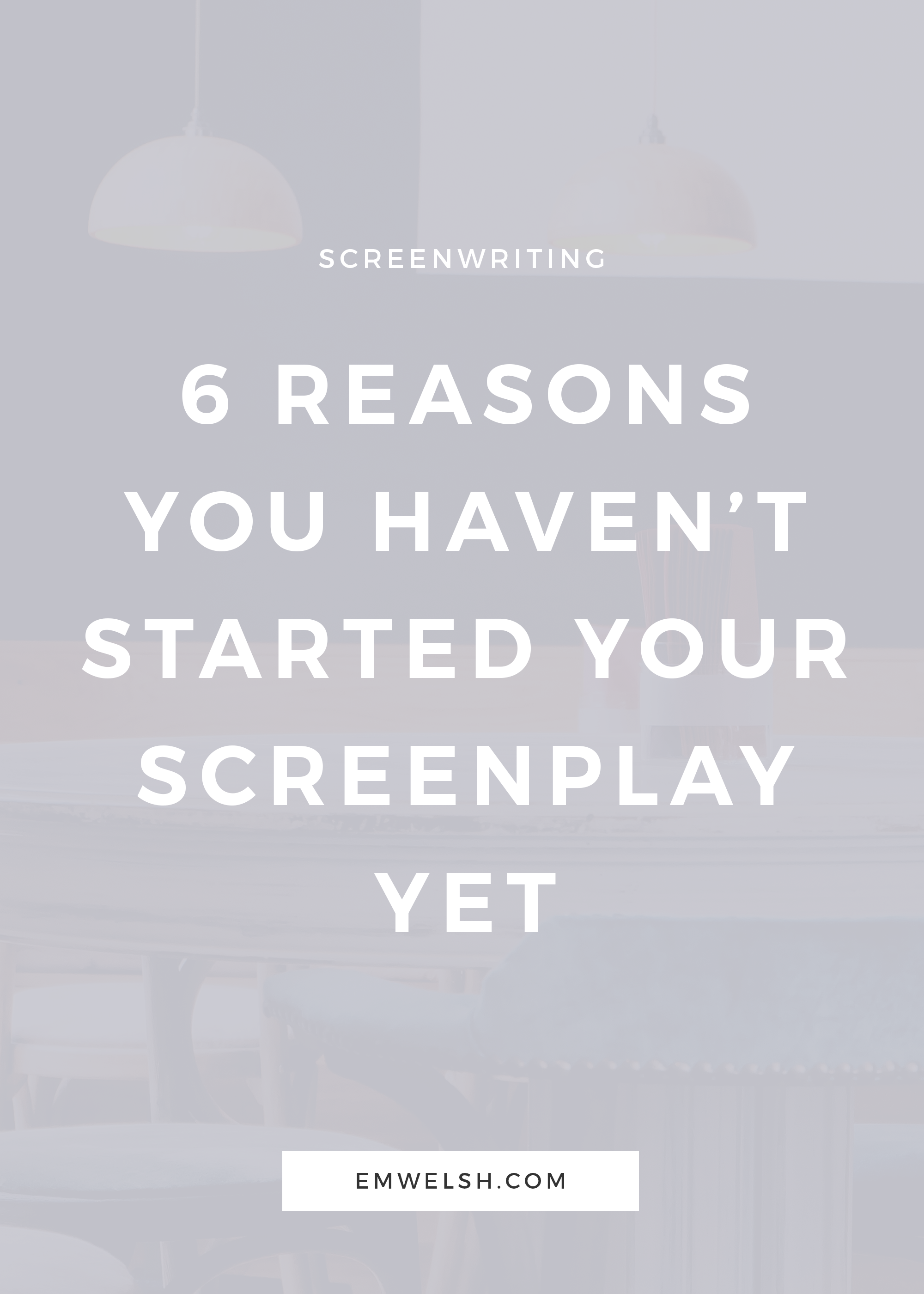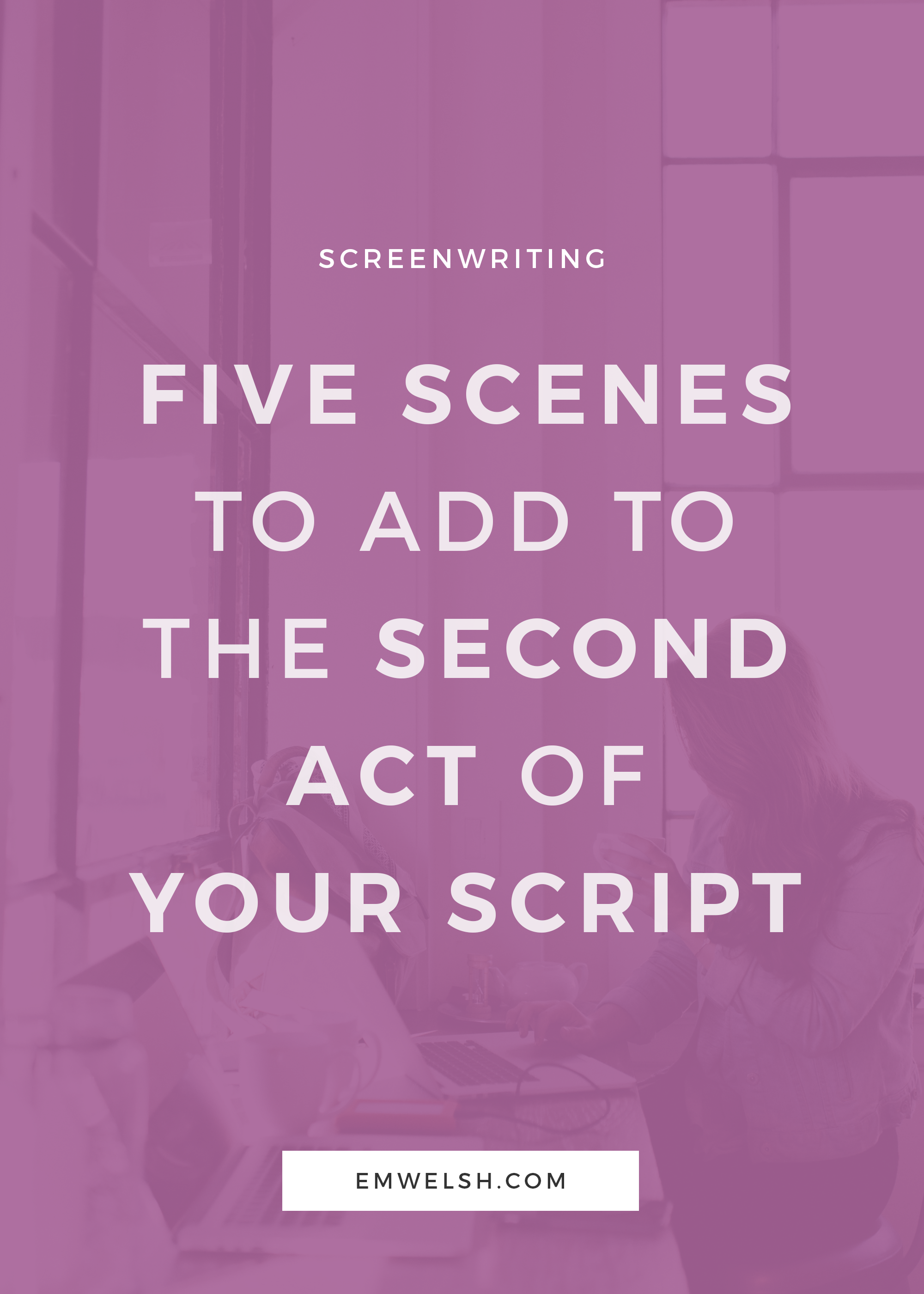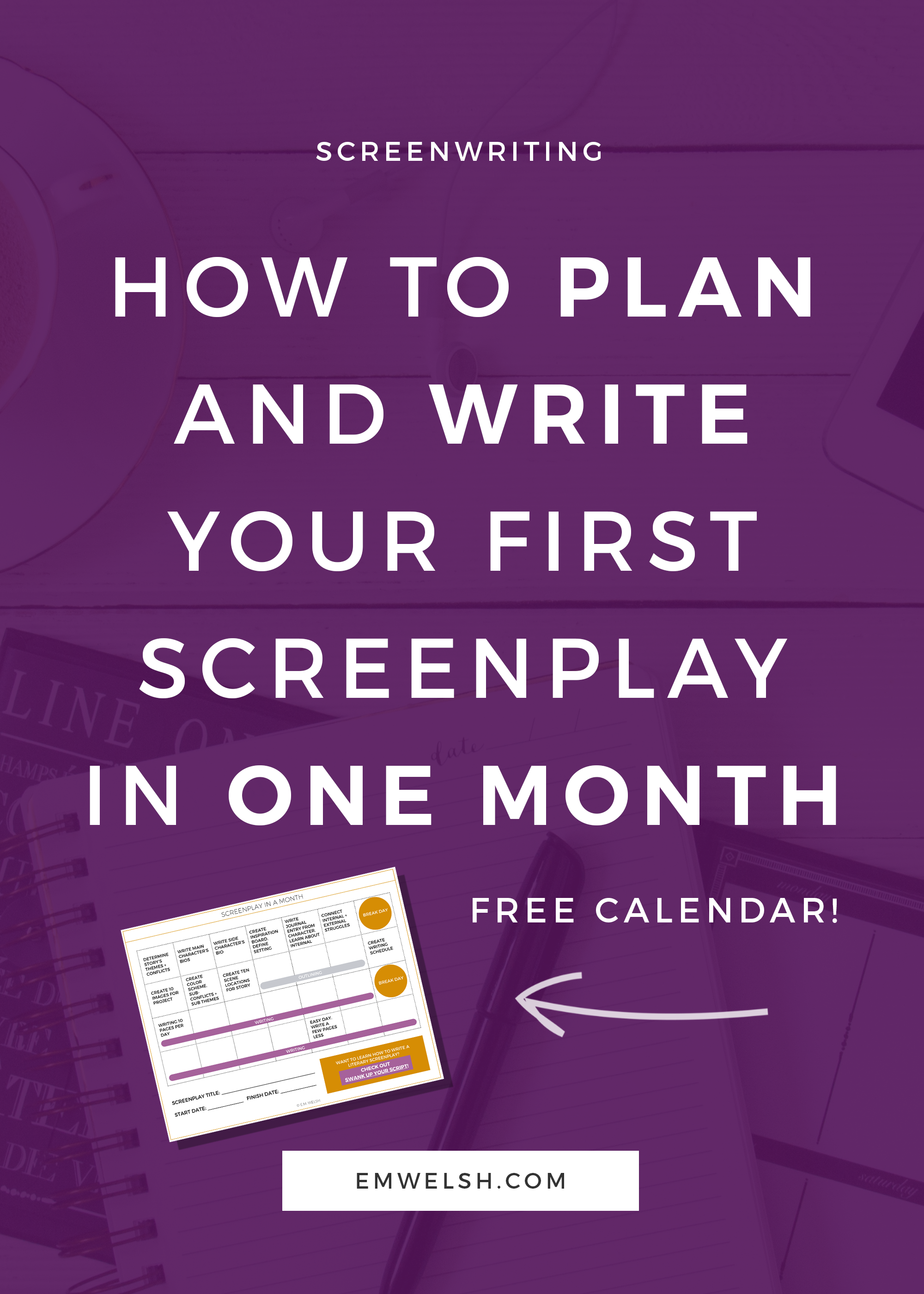The Number One Thing Every Screenplay Needs to Stand Out in the Industry
/Most articles on screenwriting will tell you that to write a script that stands out in Hollywood, you’ll need an addicting plot or solid conflict – though some may even say all you need is some explosions and you’re good to go.
But often those answers aren’t very helpful. What is an addicting plot? It it fast-paced? Is it an action movie? Or is it just deeply dramatic?
And what about a solid conflict? Does that mean the whole movie addresses the conflict? Does it mean that there is never a break in which characters just get to relax and discuss life? Or does it mean the conflict is something else? What even is a “solid” conflict?
The possibilities as to what features makes a “stand out script” in Hollywood are endless. However, after writing many screenplays and novels of my own, there is one thing I’ve noted that will automatically help you stand out in the industry, all the while still using your own voice and style.
What Every Screenplay Needs
A screenplay is, at its heart, the blueprint for a great story. Stories are a way for people to make sense of the world, our way to understand things, and most of all, a way for us to escape reality, even if that reality is often much darker than our own.
But stories also follow a certain shape. They exist to present things in a logical order of consequences, not to just relay the fact or provide a “happening” in which no story occurs at all.
All of these reasonings mean that stories have a bit more heavy-lifting to do when it comes to their purpose in this world. Because of that, they cannot exist without a purpose, and that purpose is easily powered by one thing:
Themes
Though often not discussed in terms of feature-writing, a theme is essential to any stand out story in the film industry because it stands in for what you believe and the ideas and arguments you are presenting, even if people choose to interpret those ideas in a different way.
A theme is the glue of the story. It is hidden and hard to notice when “glued” correctly, drips out in large ugly globs when it’s overdone, and causes pieces to come apart when not used at all. It’s what makes your film a story and not just an anecdote a friend told you.
But these days, many Hollywood blockbusters are completely lacking in real themes. The stories are forgettable, redundant, and overall just white noise.
Sure, their stories have sex (“romance”) and action and comedic moments, but very rarely are mainstream movies trying to say anything anymore, which means they are completely lacking in theme, and therefore a voice. Because, in truth, a theme is what you want to say.
Only you can say something in the way that you do, making theme a great place to imprint your voice and say something. And when you tell a story, I believe you should always have something you want to say.
Get a cheatsheet with 52 themes!
How Knowing Your Script’s Theme Will Make it Stand Out
It may seem like a simple solution, but the truth is knowing your screenplay’s theme opens up your storytelling world to a whole new way of thinking.
To make things clear – a theme is the main subject of your film, the ideology you are discussing. So if you can establish that right away, you’ll notice yourself creating a more standout story, even if it at first your story seems like a simple concept.
Your Story Will Feel Unified
If you know your script’s theme before you begin writing, all of the pieces of the story will easily feel unified, even when the plot feel disjointed. If you’re not sure if this is true, look at any television series you’ve enjoyed and you’ll see that the best ones were carried by deeply-rooted themes.
This is because when you have a theme backing your story, all of your choices start to align with your theme and ideas, creating both big picture similarities and small detailed oriented ones that all serve the same statement.
But the best part? When you do this before writing, it happens far more naturally than if you do it later!
For instance, if your theme is about hope and possibilities, you will naturally write with that theme in mind, embedding it into your characters, your world, and your plot.
This doesn’t mean that the world is cheerful and bright because of your theme, but that the choices you make in your story automatically point towards that theme, making the story feel naturally unified and most important of all, making for a satisfying ending.
Because the truth is, people search for messages and ideas in stories. If someone leaves your film and doesn’t wonder what you were saying – if they felt everything was perfectly expressed and that you weren’t “saying” anything – or wonder why you were saying what you did, then the film becomes far more forgettable than the films that had a prominent theme that unified the narrative.
And if you want to stand out in the industry, the last thing your film should be is forgettable.
Theme Enables You to Have More Style
When you know your story’s theme, you immediately begin to treat things like choices, including things like breaking the screenwriting rules, a big focus in Swank Up Your Script.
Though you should learn rules before you break them, often when you know your story’s theme your sense of style will begin to incorporate some natural rule breaking. However, instead of looking like an amateur, it will read as your style because it will be backed by a strong theme.
For instance, let’s say your film’s theme was about patience. Typically, in the screenwriting world, a scene is no more than two to three pages, which translates to about two to three minutes. But, if your film is about patience and humanity’s lack thereof, you could write a long scene – 10 minutes or longer even – and justify it as a style that speaks towards your theme.
Sure, the occasional person might tell you to cut down the long scene, but more than likely this person is someone who hasn’t recognized your theme or likes to follow the rules and hasn’t recognized the depth of your style in relation to your theme.
Either way, you’re making a stylistic choice that is unique to the industry and is backed by your theme, making it more than just “style” but something to be analyzed and studied for what it is trying to say.
Expressing Your Voice Will Become Easier
There are currently two clear paths for screenwriters – those who enjoy the craft, want to make money, and will do whatever it takes to make said money, or those like me who love the art of the craft and believe it is complete blasphemy to ever do anything in the film industry for money or for trends, and will therefore likely never make said money that the other path makes.
However, recently, the independent film has taken off, creating a new place for the screenwriters like myself to congregate and introduce our stories. And unlike Hollywood, they want unique, fresh stories from different voices. So, if you want to tap into that voice, you’ve got to tap into what only you can say, starting with the themes you choose.
But expressing your voice as a writer isn't always easy, especially in the beginning. That’s why choosing your theme early on is so essential – it guides you towards your own voice and the statements you want to make.
Because there is no “magic trick” to finding your writer’s voice. But if you open up your story to a message and begin trying to express that message with themes, you’ll find the process much more freeing and therefore it will be easier to find that voice if you haven’t already.
And if there’s any guaranteed way to stand out in the industry, it’s with a strong writer’s voice.
Make finding your theme easy with my free cheatsheet!
The Simple 3-Step Process to Finding Your Script’s Themes
At this point, you might be thinking to yourself – ”I get why I need a theme. But how the heck do I figure it out for my screenplay?”
Luckily, the process is relatively simple and just requires a bit of brainstorming on your part.
Ideally, you should do this before you do anything else with your screenplay, including describing your characters, but at the very do it before you’ve begun writing so you can write with your theme in mind from the get-go.
If you’ve already started your script though, don’t worry. This 3-step process will help you unify your story, though it may just take some extra revising later on down the road.
STEP ONE: Define what you are trying to say with your script.
As I mentioned, every story you ever write should say something. Even if you’re sure you are just writing something “for fun,” there likely is still something you want to say, even if you aren’t aware of it.
So, to get started thinking about your themes, write down on a separate sheet of paper what you wish to say with your screenplay.
Maybe you’re making a comment about society or maybe you’re just making an observation about the way certain people behave.
For instance, my most recent screenplay was me trying to say that “sometimes women can pressure friendships too much, making it difficult for girls (read: me) to be friends with other girls.”
It’s a mouthful, right? But later I was able to narrow down this statement into my theme!
So, when you do this try to dedicate a full paragraph or so brainstorming and journaling what you want to say with your current screenplay if you don’t know already, then you can move on to Step Two to further develop your theme into three tangible subjects.
STEP TWO: Brainstorm different “keywords” that relate to what you are saying
After you’ve understood what you are trying to say with your story, you’ll want to brainstorm different keywords that relate and speak to what you are trying to say.
With my project, I took my statement from before and broke it down into various keywords, such as “Independence” and “Friendship” and “Female Friendship.” Then I dug deeper and tried to ask myself what I was really hoping to express with this idea, and I touched on words like “Authenticity” and the phrase “What does feminism mean in the modern age?”
This was not an instant process for me at the time, nor should it be for you unless you already have a great hold on your theme.
If it helps, draw a mind map of each keyword, mapping out other keywords and phrases related to that one
STEP THREE: Organize those keywords into defined terms and narrow down your terms to 2-3 themes, ordering them in order from most prominent to least if possible.
Once you’ve created a solid list of keywords that define your film, you’ll want to narrow down that list to about 2-3 terms that you feel best embody the theme of your story.
For me, after some reflection about my story, I came to realize the three key themes were “Independence vs. Society,” “Feminism in the Modern Age” and “Friendship and Love.”
I then ordered them from most prominent to the least, putting “Friendship” first, then “Independence,” then finally “Feminism.”
There is no correct way to order these themes. It came from me deciding which theme I wanted to be the most prominent and to what extent I wanted them to be a part of my story. However, ordering your themes like I did may not always be possible, especially if the themes are closely interwoven, so at the very least focus on narrowing down your 2-3 key scenes.
Once you’re done, if you have leftover words you still feel are important, but not as important as your other themes, mark them as motifs to incorporate. You can add them in as images that reappear or pieces of conversation or anything else.
And voila! You have your film’s theme! While this may be enough for you to power through a first draft – you can easily do it one month – you now have a solid foundation to plan and write the rest of your screenplay on.















